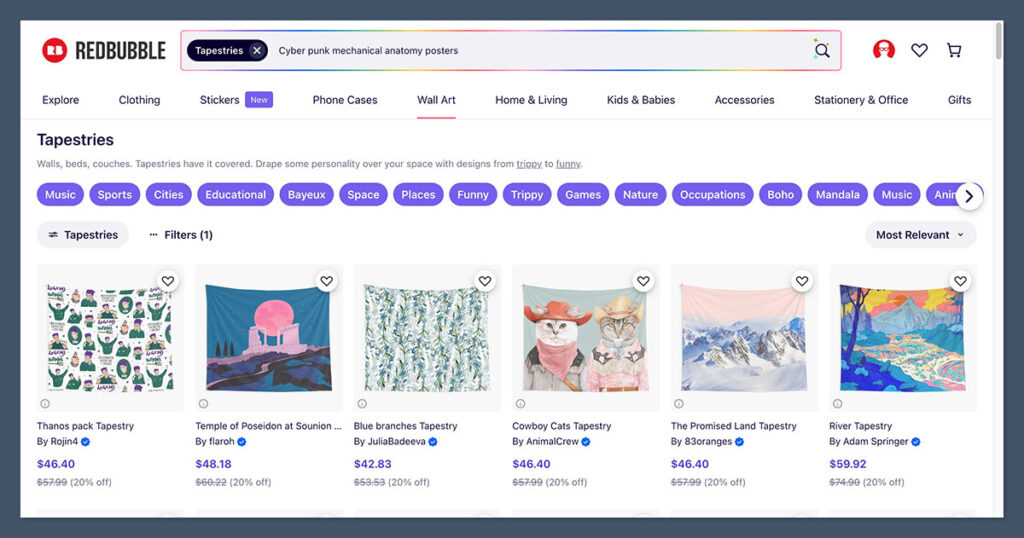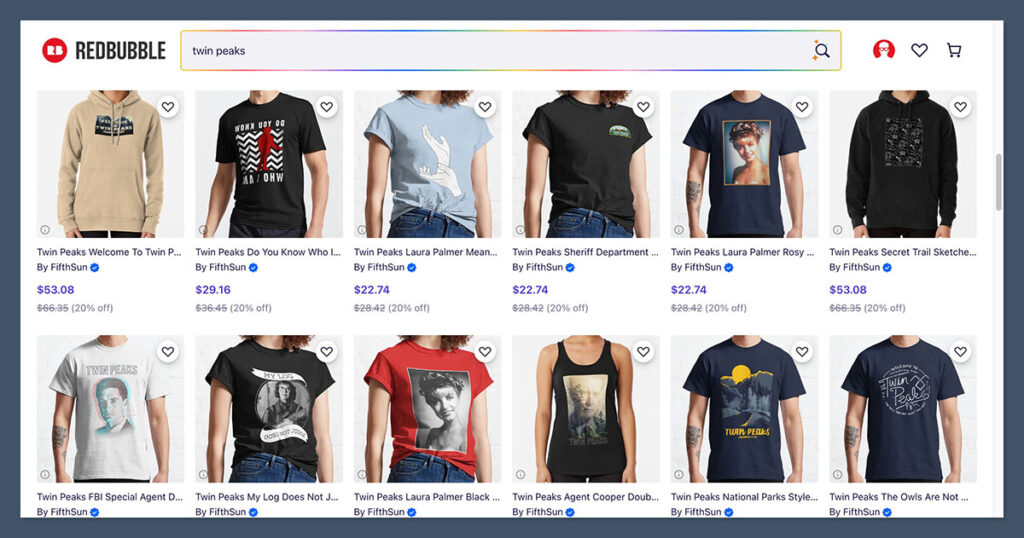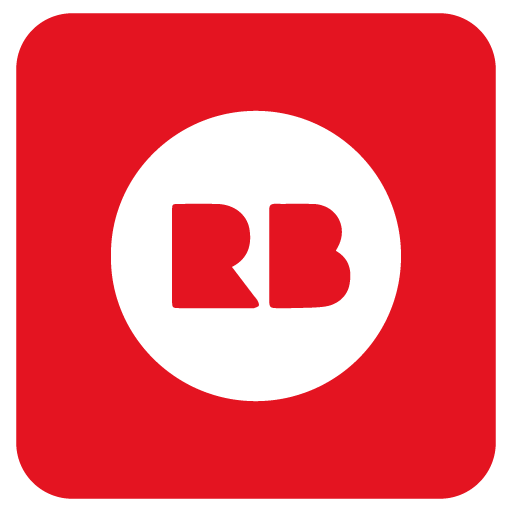Shopify and Redbubble are two of the biggest names in ecommerce, but which one should you choose to build and grow your online business?
After thoroughly comparing their features, pricing, and real-world performance, here’s what I found: Shopify is the clear winner if you're looking to build a scalable, profitable brand.
Redbubble is better if you're just starting out and want to test your designs with minimal risk.
This comparison was last updated on 08/22/2025 and includes the most up-to-date pricing and platform features.
Shopify vs Redbubble: Quick Verdict
Shopify – Best for building a long-term ecommerce business
Redbubble – Best for side hustlers or artists with zero startup capital
In this detailed comparison, I’ll break down how both platforms stack up in key areas including pricing, control, product range, profit margins, and more.
Quick Comparison: Shopify vs Redbubble
Here’s a snapshot of how Shopify and Redbubble compare across essential ecommerce features:
| Feature | Shopify | Redbubble |
|---|---|---|
| Setup Time | Moderate | Instant |
| Branding & Domain Control | Full control | None |
| Product Types | All types | Print-on-demand only |
| Fulfillment | Manual or via apps (e.g., Printful) | Fully automated |
| SEO & Content Tools | Advanced | Very limited |
| Customer Ownership | Full | No access |
| Pricing | From $39/month | Free |
| Profit Margins | High (30–60%) | Low (10–20%) |
| Built-in Traffic | No | Yes |
| Scalability | Excellent | Limited |
Best for Pricing: Redbubble

When comparing startup costs, Redbubble is the clear winner—you can start selling without paying a single dollar upfront. All you need is a design and an account.
Shopify Pricing (2025)
| Plan | Monthly Price | Key Features |
|---|---|---|
| Basic | $39 | Online store, 2 staff accounts, basic tools |
| Shopify | $105 | Professional reports, 5 staff accounts |
| Advanced | $399 | Custom reporting, 15 staff accounts |
Shopify also offers a $1/month for 3 months deal, plus a 3-day free trial. However, transaction fees apply unless you use Shopify Payments.
Redbubble Pricing
| Plan Type | Monthly Price | Features |
|---|---|---|
| Free | $0 | Upload designs and sell |
There are no monthly fees, and Redbubble handles everything, but you don’t get access to features like email marketing or customer data.
It’s worth noting that Redbubble also doesn’t charge for order fulfillment or payment processing, which simplifies the pricing model.
That said, this convenience is baked into the cost structure, and the lower profit margins reflect the hidden tradeoff.
The Winner
Redbubble wins on cost—there’s no upfront investment required. But you’re sacrificing brand ownership and profit margins in return.
Best for Branding and Control: Shopify

If you want to build a serious brand that you control from start to finish, Shopify is the better choice.
With Shopify, you get:
- Your own domain name (e.g., mybrand.com)
- Full control over store design
- Custom packaging with fulfillment partners
- Access to customer emails for remarketing
- Ability to build a long-term SEO strategy
In contrast, Redbubble controls everything:
- Your store lives on redbubble.com
- No access to customer data
- No custom packaging or design control
- Limited store customization
Another key difference is how the platforms shape customer perception.
A custom-branded Shopify store appears professional and trustworthy, while a Redbubble profile still feels like part of a third-party marketplace.
If you care about how your brand is perceived, Shopify gives you far more tools to create a consistent, professional image.
The Winner
Shopify gives you full brand control, while Redbubble locks you into their platform with no real ownership.
Best for Product Range: Shopify
Both platforms support physical products, but Shopify offers much more flexibility.
Shopify Product Types
- Physical inventory (clothing, electronics, etc.)
- Digital downloads (ebooks, music, courses)
- Print-on-demand (via apps like Printful, Gelato)
- Subscriptions
- Bundles and upsells
Redbubble Product Types

Redbubble is focused exclusively on print-on-demand products, like:
- T-shirts
- Stickers
- Art prints
- Phone cases
- Mugs
- Home decor
These are great for artists, but if you want to offer more diverse or customized products, Redbubble won’t cut it.
Shopify also supports wholesale pricing, pre-orders, custom product configurations, and bundling apps—features you simply won’t find on Redbubble.
Whether you’re selling niche tech gear or launching a digital product line, Shopify’s flexibility gives you room to test, iterate, and expand.
The Winner
Shopify wins for its broader product offering and ability to expand as your business grows.
Best for Built-In Traffic: Redbubble
This is one of the few areas where Redbubble comes out ahead.
You don’t need to run ads or SEO. Redbubble already attracts millions of visitors each month, and your listings are immediately available in their marketplace.
But there’s a tradeoff:
- Redbubble controls your visibility
- You’re competing with thousands of other artists
- Your designs can get buried unless you constantly upload new content and optimize tags
Shopify, on the other hand, requires you to bring your own traffic through:
- SEO
- Paid ads
- Social media
- Email marketing
For users with no marketing experience, Redbubble offers a fast path to eyeballs.
But Shopify gives you the tools to build long-term, compounding traffic through blog content, backlinks, and email campaigns—something Redbubble simply doesn’t offer.
The Winner
Redbubble is best for passive traffic, but Shopify offers more sustainable, long-term growth if you’re willing to invest in marketing.
Best for Profit Margins: Shopify
When it comes to how much money you can actually make, Shopify is the clear winner.
With Shopify + a print-on-demand app like Printful, you set your own prices. Here’s a typical profit breakdown:
| Product | Printful Cost | Sale Price | Your Profit |
|---|---|---|---|
| T-Shirt | $13.00 | $25.00 | ~$12.00 |
| Hoodie | $22.00 | $45.00 | ~$23.00 |
| Mug | $7.50 | $18.00 | ~$10.50 |
With Redbubble, they set the base price and you add a small markup:
| Product | Base Price | 20% Margin | Your Profit |
|---|---|---|---|
| T-Shirt | $19.90 | $4.00 | $4.00 |
| Sticker | $2.50 | $0.50 | $0.50 |
| Poster | $24.00 | $4.80 | $4.80 |
Most artists on Redbubble report earning under $300/year unless they aggressively promote their stores.
Over time, Shopify’s model supports compounding income.
As you build traffic and convert more customers, your return per sale increases—not just from the product margin, but from upsells, email marketing, and returning customers.
The Winner
Shopify offers higher profit margins and income potential, especially when combined with marketing tools and SEO.
Best for Marketing and SEO: Shopify

Shopify is built for ecommerce marketing. It has more advanced tools to help you scale your business.
Shopify Marketing Tools
- Shopify Email (send campaigns from your dashboard)
- SEO-friendly blogs and product pages
- Social media integrations (Instagram, TikTok, Facebook)
- Abandoned cart recovery
- Custom discount codes and bundles
- App integrations (Klaviyo, Omnisend, Privy)
Redbubble Marketing Tools
- Basic SEO tagging
- No access to emails or retargeting
- No blogging or content options
- No external integrations
You can’t build a customer list or run a real marketing strategy on Redbubble. With Shopify, you’re not just promoting products—you’re building a brand with measurable data and long-term audience targeting.
The Winner
Shopify wins with a full marketing suite designed to help businesses grow.
Best for Ease of Use: Redbubble

Redbubble is easier to get started with.
You can:
- Create a free account in minutes
- Upload your design
- Select which products to offer
- Publish your store immediately
Shopify, on the other hand, has a steeper learning curve:
- You’ll need to choose a theme
- Customize your store layout
- Set up payment gateways
- Integrate apps (like Printful)
The simplicity of Redbubble makes it ideal for creators who want a hands-off experience. You don’t need to worry about plugins, payments, logistics, or even customer service—it’s all taken care of behind the scenes.
That said, once you get through the setup process, Shopify becomes intuitive.
The Winner
Redbubble wins on ease of use, but Shopify becomes easier as you learn the platform.
Best for Design and Templates: Shopify

Shopify offers over 190 templates, with 13 free and dozens of premium ones ranging from $100 to $500.
They’re built for ecommerce, mobile-optimized, and customizable.
Redbubble doesn’t offer custom store designs—you get a simple artist profile that looks like every other store on the platform.
Shopify’s themes also support dynamic sections, video banners, product filtering, and full mobile responsiveness.
Whether you want a sleek minimalist store or something colorful and high-converting, the options are far broader than Redbubble’s static layout.
The Winner
Shopify gives you more control over design, branding, and user experience.
Final Verdict: Shopify vs Redbubble
| Category | Winner |
|---|---|
| Pricing | Redbubble |
| Branding & Control | Shopify |
| Product Range | Shopify |
| Built-In Traffic | Redbubble |
| Profit Margins | Shopify |
| Marketing Tools | Shopify |
| Ease of Use | Redbubble |
| Templates & Design | Shopify |
Redbubble is ideal for beginners or artists looking to sell without any upfront costs. It’s quick, hands-off, and requires little effort to get started. But you're limited by low margins, no branding, and zero customer ownership.
Shopify is better for serious sellers who want to build a real brand, earn higher margins, and scale with marketing, SEO, and email. It takes more time to set up—but gives you complete control and a stronger return on investment.
If you’re just testing out designs or want a low-risk way to dip into ecommerce, Redbubble is a useful entry point.
But for those aiming to build a scalable online business, Shopify has the infrastructure, flexibility, and long-term upside that Redbubble can’t offer.
If I had to choose between the two, I’d go with Shopify—especially if you're serious about ecommerce and want to build something that lasts.






Comments 0 Responses